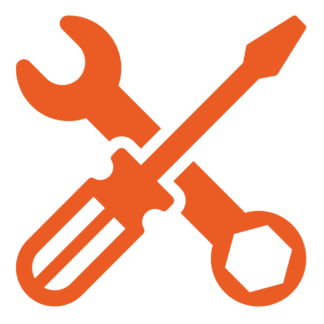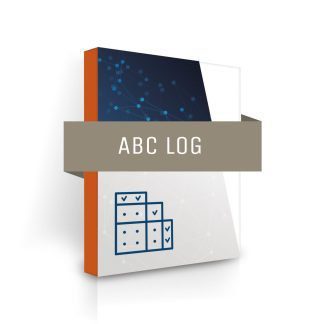Description
David is a supply manager. He keeps track of logistics and update the company’s inventory. He analyzes operational performance and resolve issues.
Who is David?
David has been working for the company for many years and has built a strong reputation for being reliable and efficient in his role as a supply manager.
One day, the company announces that it will be implementing a new inventory management system. David is worried about the transition, as he is used to the old system and is not very familiar with technology. However, he decides to embrace the change and begins learning about the new system.
Despite some initial challenges, David quickly becomes proficient in the new system and is able to streamline the inventory process, leading to increased efficiency and cost savings for the company. His colleagues are impressed by his ability to adapt and learn new things, and he is praised for his contributions to the company.
As a result of his hard work and dedication, David is promoted to a higher position within the company, where he continues to excel and drive positive change. He becomes a valuable asset to the organization and is respected by his peers and superiors alike.
FAQ
What is the role of a procurement manager?
- A procurement manager is responsible for managing the purchasing process, selecting and evaluating suppliers, negotiating contracts, and ensuring that products and services are acquired at the best possible cost and quality.
How does a procurement manager contribute to cost savings?
- A procurement manager identifies opportunities for cost savings through strategic sourcing, supplier negotiations, volume discounts, efficient inventory management, and process improvements.
What is the importance of supplier relationships in procurement management?
- Maintaining strong supplier relationships is crucial for ensuring product quality, timely deliveries, competitive pricing, and effective communication, which can minimize disruptions in the supply chain and contribute to the organization’s success.
How does a procurement manager manage risks?
- A procurement manager manages risks by identifying potential supply chain disruptions, evaluating supplier performance, monitoring market trends, and developing contingency plans to minimize the impact of unexpected events.
What is strategic sourcing, and how does it differ from traditional procurement?
- Strategic sourcing is a proactive, data-driven approach to procurement that focuses on long-term supplier relationships, cost reduction, risk management, and value creation, whereas traditional procurement tends to be more reactive and transactional.
How do procurement managers ensure compliance with regulations and company policies?
- Procurement managers stay informed about relevant laws, industry standards, and company policies, and they monitor procurement activities to ensure adherence to these requirements. They also provide training and support to their team to promote compliance.
How can a procurement manager support sustainability initiatives?
- A procurement manager can support sustainability initiatives by incorporating environmental, social, and ethical considerations into the procurement process, selecting suppliers with sustainable practices, and promoting the use of eco-friendly products and services.
What are the key skills and qualifications for a procurement manager?
- A procurement manager should have strong negotiation, communication, and analytical skills, as well as experience in procurement, supply chain management, or a related field. A degree in purchasing management, industry management, or a related discipline may be beneficial.
How does a procurement manager use data in their role?
- Data plays a critical role in procurement management, informing decisions related to demand forecasting, supplier evaluation, cost analysis, inventory management, performance measurement, risk management, and process improvement.
How does a procurement manager collaborate with other departments within the organization?
- A procurement manager works closely with internal departments, such as sales, finance, and operations, to understand and meet their procurement needs, align purchasing decisions with the organization’s overall objectives, and ensure effective communication and collaboration.
Meeting routine
Using Data Analysis to Improve Procurement in the Industry
David: Hello Victor, I’d like to discuss with you the procurement issues we’ve been facing lately and the solutions we’ve put in place to improve parts availability for the workshop.
Victor: Hi David, I’m delighted to see that you’ve taken initiatives to address these problems. Can you give me an overview of what you’ve done so far?
David: Of course. We first analyzed historical order and delivery data to identify suppliers who posed the most problems in terms of delays and quality. Then, we worked with these suppliers to understand the causes of the issues and implement action plans to resolve them.
Victor: That’s an excellent approach. How did you use data analysis to improve parts availability?
David: We used data analysis methods to identify trends and patterns in delivery delays and quality issues. This allowed us to better understand the factors influencing these problems and develop strategies to mitigate them.
For example, we found that some parts were regularly out of stock due to demand variability. So, we set up a demand forecasting system based on machine learning algorithms to better anticipate parts needs and adjust our orders accordingly.
Victor: That sounds very promising. Have you already seen improvements in parts availability since implementing these measures?
David: Yes, indeed. Since we started using these data analysis methods, we have been able to reduce delivery delays and improve the quality of the received parts. As a result, parts availability for the workshop has significantly improved, which has increased productivity and reduced production costs.
Victor: I’m delighted to hear that. Data analysis is a powerful tool for improving our supply chain, and I’m glad to see that we are leveraging it to address our procurement issues. Keep working with suppliers and using data analysis to further optimize our procurement processes.
David: Thank you, Victor. I’m confident that we will continue to see improvements through these data analysis methods and our collaboration with suppliers. I will keep you informed of the progress made and new improvement opportunities we identify.
Victor: I appreciate that, David. Keep up the great work, and feel free to share your ideas and concerns with me in the future. Together, we can make our supply chain more efficient and reliable, benefiting our entire company.
David: Thank you for your support, Victor. I’m convinced that with a data-driven approach and close collaboration with our suppliers, we can overcome procurement challenges and continue to improve our overall performance.
Victor: I completely agree. Data analysis and collaboration are essential for solving the complex problems our supply chain faces. Be sure to share your successes with the rest of the team and promote a culture of innovation and continuous improvement within our organization.
David: Absolutely, Victor. I will ensure that our successes and lessons learned are shared with the team to reinforce our commitment to operational excellence.
Victor: Thank you, David. I look forward to seeing how our business will continue to progress through these efforts. Let’s move on to other topics, are there any other issues or opportunities you’d like to discuss this morning?
David: For now, I think we’ve covered the main procurement issues. I will continue to monitor the situation and keep you informed of any changes or new opportunities that may arise.
Victor: Perfect, I appreciate that. Feel free to contact me if you need anything. Have a great day, David.
David: Thank you, Victor. You have a great day too.




